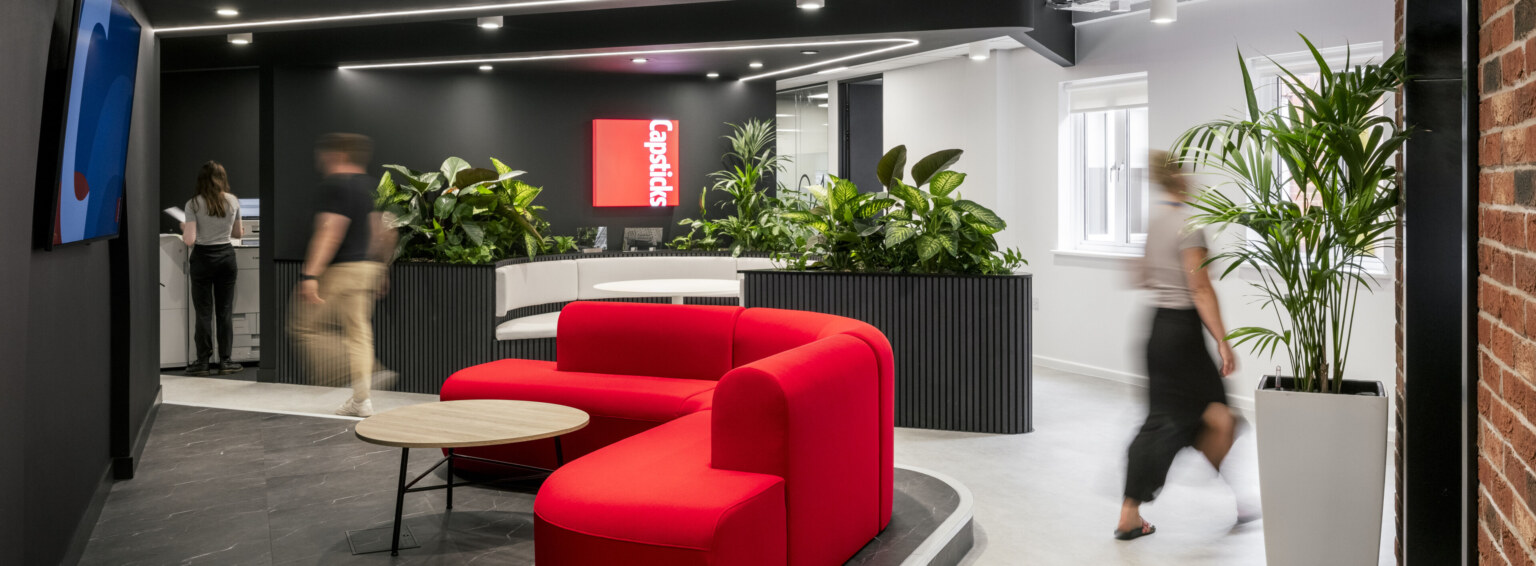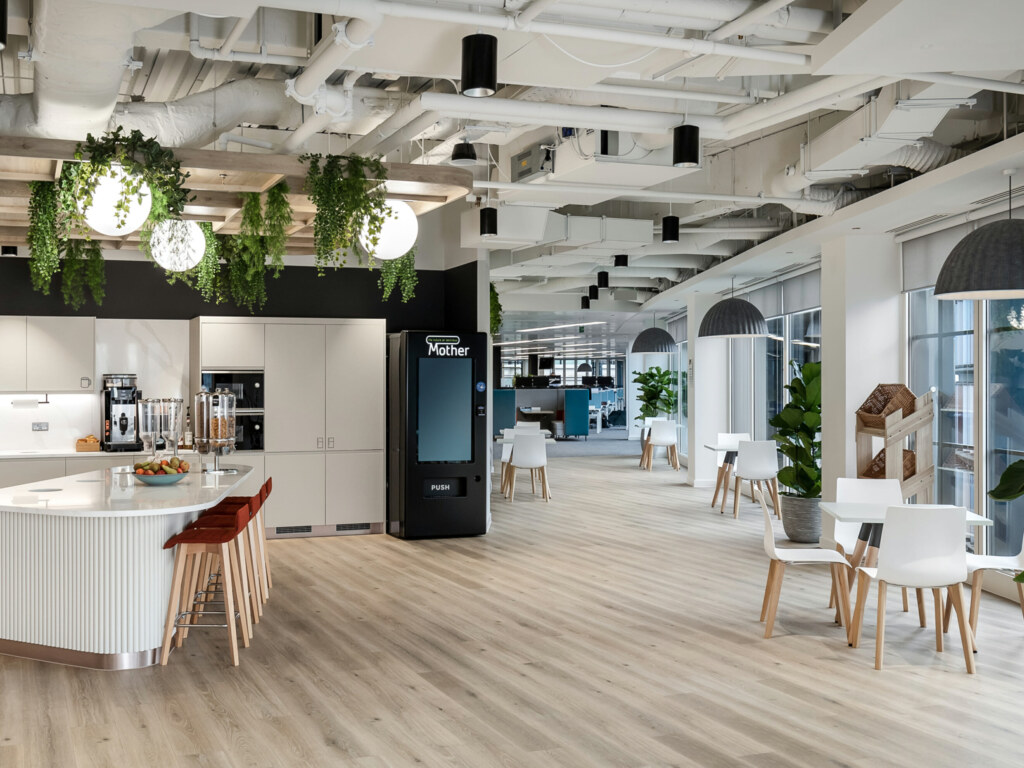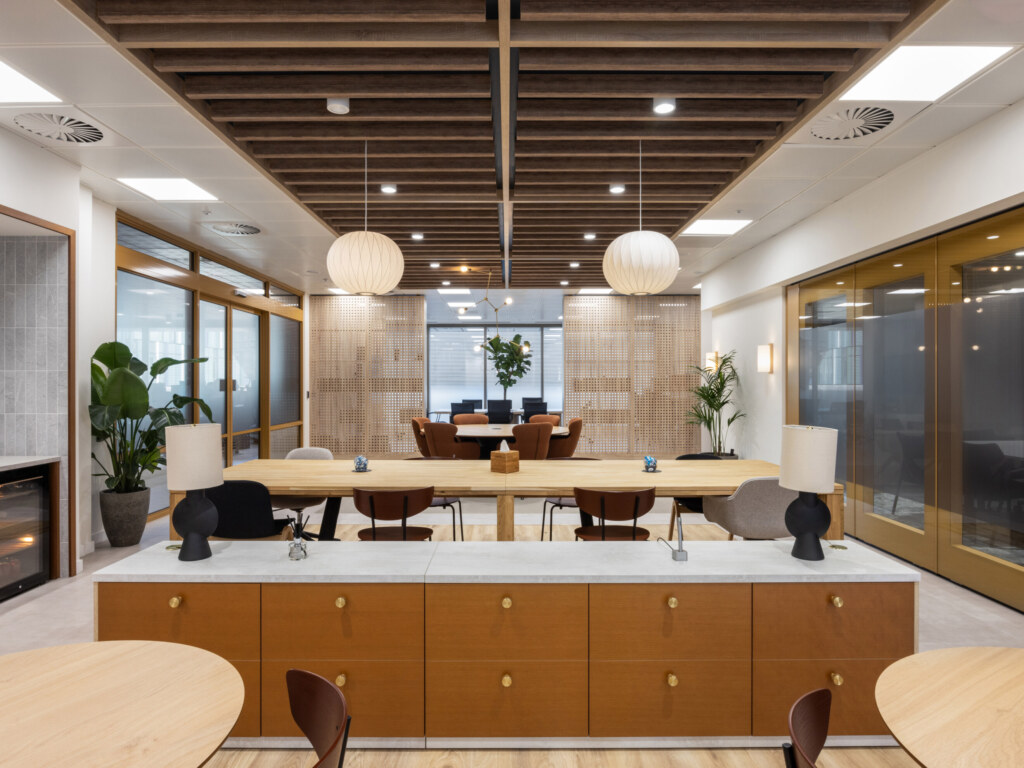-
The days of private cellular offices cluttered with paperwork, tight hierarchical cultures based on seniority and lavish front of house receptions are now in the past for many law firms in the City.
Rapid technological developments are helping to reimagine the office with digital storage, extensive outsourcing and, more recently, reduced occupancy levels fast becoming the norm. Even organisational structures have altered to focus on business and outcomes and client outreach, with company management guided by non-lawyer business executives rather than managing partners.
These seismic shifts place profitability and competitiveness at the forefront of legal firms‘ business strategies, and with it, the functions and aesthetics of the office environment itself. This article looks at some of these changes affecting the legal profession and how the workplace can work smarter for the sector.
-
Law firms will be more distributed
Law firms are significant workplace users, occupying nearly twice the amount of office space per employee as the banking, insurance or technology sectors. Property and the associated costs are often the legal sector’s largest expense after staffing. With the shrinking size of tech, reduced occupancies, and virtual access to clients, documents and hearings, many in the sector are, with good reason, evaluating their space requirements.
-

-
As of January 2024, law firm offices are averaging 78.1% weekly occupancy—about 25% higher than other industries—while 92% of legal professionals say they’d like to work remotely at least one day per week.
Corgan
Legal Landscape, 2024
-
Except for a few, client-facing HQs aren’t going anywhere. Some firms we spoke with were currently looking into taking additional spaces, such as off-site locations for admin and support teams and coworking and satellite offices for fee-earners in lower-cost, localised areas. As firms consider reducing their real estate portfolios, there is increasing recognition that the workplace can be a valuable tool for engagement, recruitment, and brand value.
-

-
The vast majority of law firms plan to maintain or only moderately reduce their real estate footprint over the coming years; just 17% plan significant expansion.
CBRE
Law Firm Benchmarking Survey, 2024
-
Law firms are re-evaluating expansion
The assumption that legal businesses are looking to shrink their office space is no longer accurate. In fact, recent research shows that 45% of UK businesses — including law firms — plan to expand their office footprint within the next 12–18 months. Importantly, much of this expansion is not about moving into brand new buildings, but about reconfiguring existing space to support evolving ways of working. At the same time, 44% of businesses are introducing more flexible workspace options, reflecting the rise of hybrid working and the need for greater adaptability in office layouts.
For law firms, this signals a clear shift: the physical office is still a central asset, but it must earn its place in the firm’s strategy. Rather than scaling back, firms are choosing to make their real estate work harder — upgrading space for client hosting, enabling hybrid collaboration, and reinforcing firm culture. We’ve seen this play out in recent projects where re-use and refurbishment allow firms to maximise value from their current space while delivering a fresh, future-ready workplace.
-
Designing offices for versatility
As lawyers, on average, are expected to bill 1,500 to 2,000 hours a year, the value of creating a space where lawyers want to work is business-critical. In addition, considering the high expectations of clients and the talent shortage within the sector, we expect firms to gravitate towards operating offices to be more focused on employee and visitor experiences.
In these offices, every space needs to bring value to the activities of work: even lobbies and reception areas become defined workspaces geared towards activity-based working principles. As expected, furniture plays a critical role in encouraging behaviours and promoting tasks – from single, high backed lounge chairs for telephony privacy and laptop work to modular sofas to accommodate larger collaborative groups.
Introducing activity-based working can yield dramatic cost savings. Law firms with space densities of 800 sq ft per lawyer incorporating activity-based working practices into their offices for 25% to 50% of staff could see a reduction in floor space by up to 30% — creating huge rent savings per annum.
At Hogan Lovells’ London office, we designed a workplace that balances high-performance collaboration with spaces for deep focus, giving lawyers the choice of how and where to work. By integrating a variety of settings — quiet zones, client-ready areas, and flexible collaboration spaces — the office supports both productivity and wellbeing, while ensuring the firm can adapt its footprint as working patterns evolve
-
Spotlight on Marks and Clerk
We saw this flexibility built into IP experts Marks and Clerk’s 25k sq ft office. Using full-height sliding panels, we designed spaces that were quickly customisable depending on the types of meetings – from 30 people board meetings to 200 standing events.
For smaller meetings and focused work, secluded booths, high backed seating and outside cafe areas provide multiple options for staff. This same plug-and-play access that supports visitors also supports associates and staff seeking variety in their work settings and offers the ability to tailor these settings to the task at hand.
-

-
Technology will support change
A primary challenge for law firms pre-pandemic involved creating tech strategies that worked for all staff. From case management tools, secure document collaboration SaaS and workflow management solutions – finding the time to provide access, learning and support for lawyers to use these new tools proved demanding for many firms. However, the companies that began implementing these solutions were often best equipped to continue with minimum disruption.
-
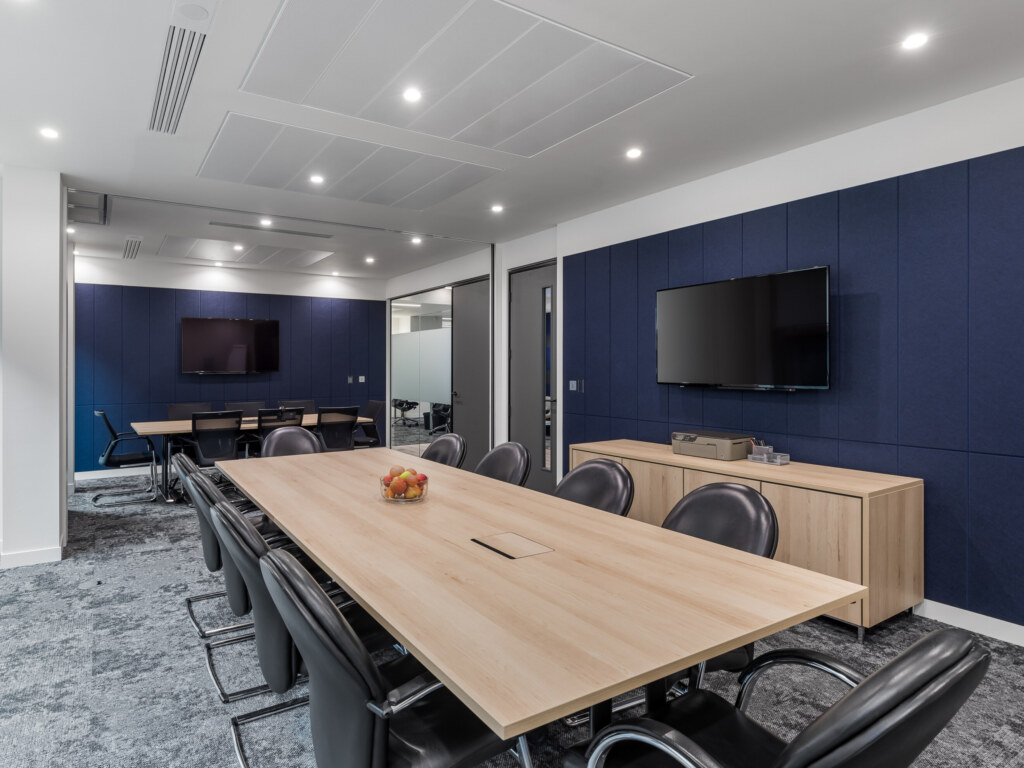
-
From remote working to the shifting focuses of the office, the networked nature of the law firm is what makes these changes possible. As firms continue to adopt workplace technology across their portfolios, employees with bring-your-own-device access provide a seamless transition between sites. When at their primary locations, they will leverage collaboration technology to work in the cross-office teams that are the reality of the networked firm.
In a sector historically driven by procedure and tradition, many legal firms realise that innovation is key to surviving this rapidly changing commercial landscape. While delivering efficient and profitable services remains the core focus for companies, flexibility and resiliency need to be part of this mix and, with that, office spaces modelled on resiliently and effectively responding to change.
-
Future-Fit Law Firms – Workplace Strategy & Design Guide
To find out how we have helped companies transform their office space, download our legal guide to explore the solutions we have provided for companies within the sector.
download now -
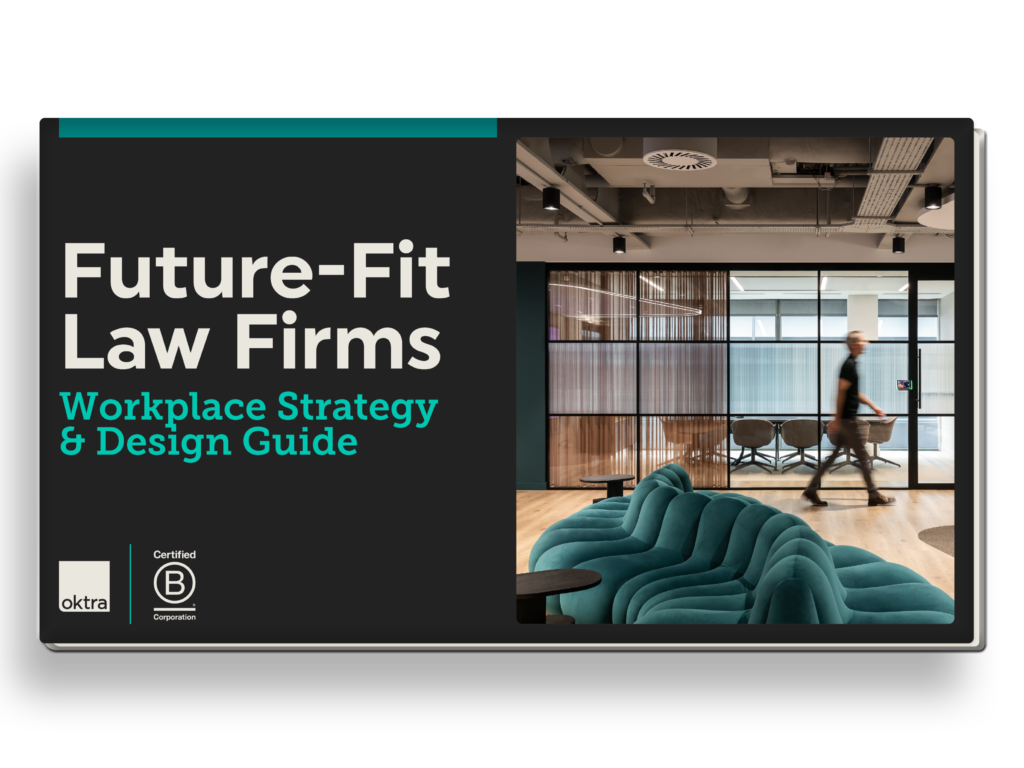
-
Contact us
Speak to our team of experts across the UK
020 7553 9500
info@oktra.co.uk
-
